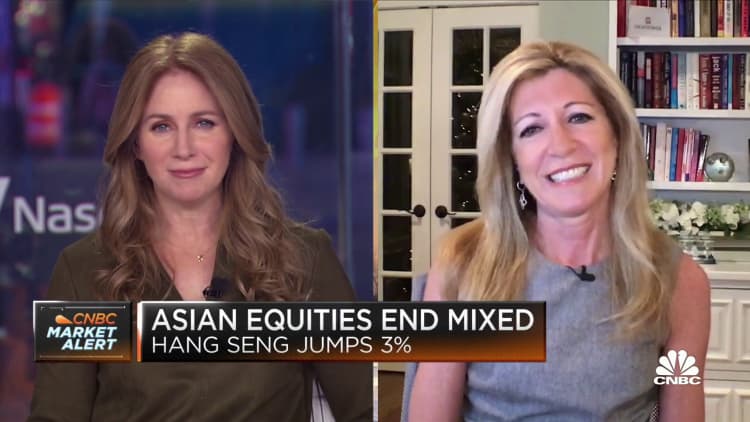
Subway passenger traffic in Shanghai is quickly returning to levels seen before the latest Covid wave, according to Wind data. Pictured here is a subway car in the city on Jan. 4, 2023.
Hugo Hu | Getty Images News | Getty Images
BEIJING — China will likely be able to live with Covid-19 by the end of March, based on how quickly people have returned to the streets, said Larry Hu, chief China economist at Macquarie.
Subway and road data show traffic in major cities is rebounding, he pointed out, indicating the worst of the latest Covid wave has passed.
“The dramatic U-turn in China’s Covid policy since mid-Nov implies deeper short-term economic contraction but faster reopening and recovery,” Hu said in a report Wednesday. “The economy could see a strong recovery in Spring.”
In the last several days, the southern city of Guangzhou and the tourist destination of Sanya said they’d passed the peak of the Covid wave.
Chongqing municipal health authorities said Tuesday that daily visitors to major fever clinics was just over 3,000 — down sharply from Dec. 16 when the number of patients received topped 30,000. The province-level region has a population of about 32 million.

Chongqing was the most congested city in mainland China during Thursday morning’s rush hour, according to Baidu traffic data. The figures showed increased traffic from a week ago across Beijing, Shanghai, Guangzhou and other major cities.
As of Wednesday, subway ridership in Beijing, Shanghai and Guangzhou had climbed significantly from the lows of the last few weeks — but had only recovered to about two-thirds of last year’s levels, according to Wind Information.
Caixin’s monthly survey of services businesses in December found they were the most optimistic they’d been in about a year-and-a-half, according to a release Thursday. The seasonally adjusted business activity index rose to 48 in December, up from a six-month low of 46.7 in November.
That below-50 reading still indicates a contraction in business activity. The index for a separate Caixin survey of manufacturers edged down to 49 in December, from 49.4 in November. Their optimism was the highest in ten months.
Poorer, rural areas next
Shanghai medical researchers projected in a study that the latest Covid wave would pass through major Chinese cities by the end of 2022, while rural areas — and more distant provinces in central and western China — would be hit by infections in mid- to late-January.
“The duration and magnitude of upcoming outbreak could be dramatically enhanced by the extensive travels during the Spring Festival (January 21, 2023),” the researchers said in a paper published in late December by Frontiers of Medicine, a journal sponsored by China’s Ministry of Education.
Typically hundreds of millions of people travel during the holiday, also known as the Lunar New Year.
The researchers said senior citizens, especially those with underlying health conditions, in China’s remote areas face a greater risk of severe illness from the highly transmissible omicron variant. The authors were particularly worried about the lack of medicine and intensive care units in the the countryside.
Even before the pandemic, China’s public health system was stretched. People from across the country often traveled to crowded hospitals in the capital city of Beijing in order to get better health care than they could in their hometowns.
Oxford Economics senior economist Louise Loo remained cautious about a rapid rebound in China’s economy.
“A normalisation in economic activity will take some time, requiring among other things a change in public perceptions towards contracting Covid and vaccine effectiveness,” Loo said in a report Wednesday.
The firm expects China’s GDP will grow by 4.2% in 2023.
Lingering long-term risk
The medical researchers also warned of the risk that omicron outbreaks on the mainland “might appear in multiple waves,” with new surges in infections possible in late 2023. “The importance of regular monitoring of circulating SARS-CoV-2 sublineages and variants across China shall not be overestimated in the months and years to come.”
However, amid a lack of timely information, the World Health Organization said Wednesday it was asking China for “more rapid, regular, reliable data on hospitalizations and deaths, as well as more comprehensive, real-time viral sequencing.”
China in early December abruptly ended many of its stringent Covid controls that had restricted business and social activity. On Sunday, the country is set to formally end a quarantine requirement for inbound travelers, while restoring the ability of Chinese citizens to travel abroad for leisure. The country imposed strict border controls beginning in March 2020 in an attempt to contain Covid domestically.







